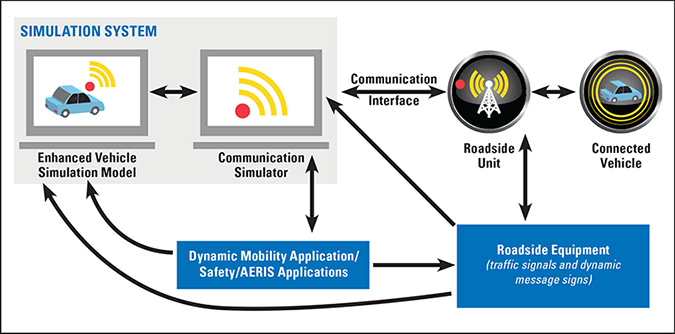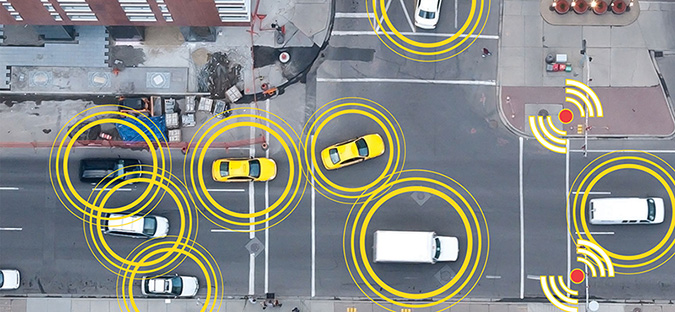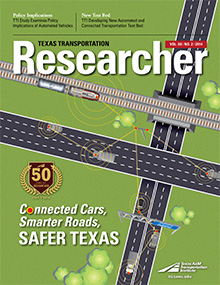Before the new era of connected vehicles can become a reality, researchers must first find a way to test each proposed component and application under a variety of conditions that mimic real-world scenarios.
For example, can the hardware inside a connected vehicle successfully receive and correctly interpret a queue warning, even with driving environments that include mountainous terrain or signal-blocking skyscrapers? And assuming the warning message is received, what impact will it have on the overall traffic situation? Did the vehicles upstream from the queue slowdown, and did that warning signal alleviate congestion?
To find the answers, researchers are turning to computer simulation using actual hardware. This technique is known as hardware-in-the-loop simulation.

“Our objective is to build a reliable computer platform in which connected-vehicle applications and hardware can be tested,” explains Research Engineer Srinivasa Sunkari of the Texas A&M Transportation Institute (TTI). Sunkari is the principal investigator on the Federal Highway Administration (FHWA) project titled New Approaches for Testing Connected Vehicles and Highway System. The study is part of FHWA’s Exploratory Advanced Research Program. In addition to TTI research scientists and engineers, other computer programming experts from Siemens Corporation and Battelle are working on the multi-year project.
Ideally, the comprehensive evaluation platform will become the basis for all connected-vehicle application testing. FHWA’s vision includes a realistic platform and contains four environments: traffic simulation, hardware testing, communication simulation and connected-vehicle applications testing.
“This is a very challenging project,” FHWA’s Peter Huang, highway research engineer, says. “Traffic simulation software is not new, but those existing programs are not designed for connected-vehicle communication. We’re building a foundation on which all connected-vehicle scenarios can be tested.”
Engineers have to rewrite and modify existing traffic simulation software in order to replicate all the scenarios needed to determine the impact of each vehicle communication application. It’s a complex process. One of the key scenarios is to integrate the behavior of an actual vehicle in a simulation model. If that can be done, researchers will use the platform to test new applications developed in the future.
“The final product will help us determine which applications have the most influence on safety, congestion and the environment,” Huang explains. “The platform is critical for us to make the decision about which applications should be pursued first.”

